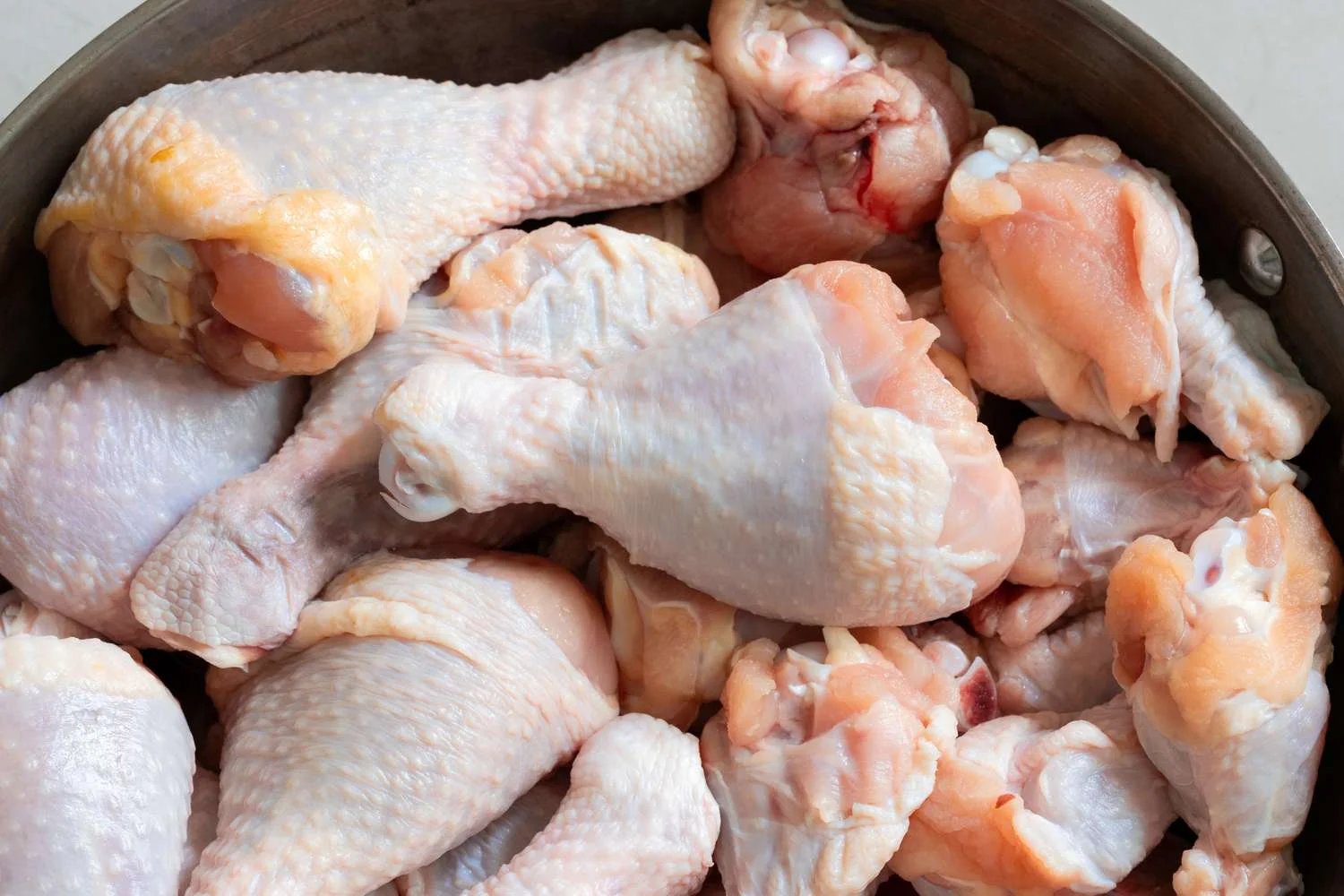Scientists Outline A Safer Path To Salmonella

Scientists Outline A Safer Path To Salmonella
- Scientists at Ohio State University have identified antimicrobial peptides from the probiotic Lactobacillus rhamnosus GG that could someday protect poultry — and consumers — from Salmonella contamination.
- In initial tests, three peptides effectively inhibited various Salmonella strains and decreased intestinal colonization in infected chickens.
- Although the research isn’t yet ready for commercial use, the CDC recommends home cooks prevent foodborne illness by properly thawing, handling, and cooking turkey to 165°F.
An estimated 45 million turkeys are consumed on Thanksgiving across the United States. Usually, this results in both tired and happy diners who quickly head to the couch, unbuttoning the top button to relax and enjoy the rest of the football game. But for the unlucky few, it can also lead to food poisoning from Salmonella, which, according to the Centers for Disease Control and Prevention (CDC), causes an estimated 1.35 million infections, 26,500 hospitalizations, and 420 deaths in the U.S. each year. Poultry products, including chicken and turkey, are consistently identified as a major source. However, a group of scientists hopes their findings will help protect you from this threat in the near future.
In November, researchers at The Ohio State University published their findings in the journalMicrobiology Spectrumexamining how small protein fragments called antimicrobial peptides might help prevent Salmonella from taking hold in your poultry in the first place.
the و and و in – تفاصيل مهمة
The peptides produced by the probiotic bacterium Lactobacillus rhamnosus GG (LGG) have been studied before, with research indicating they can damage the outer membranes of some harmful bacteria. So, the team used this knowledge to see if they could synthesize six LGG-derived peptides capable of doing the same against Salmonella.
They tested the peptides against two major foodborne strains: Salmonella Typhimurium and Salmonella Enteritidis. Four of the peptides showed meaningful results, while three proved to be “effective in inhibiting Salmonella Typhimurium.” When they expanded the test to include eight additional Salmonella strains, the same three peptides completely inhibited all of them.
Notably, the pattern held up when the team took the trial to chickens as well. The researchers tested the peptides in a flock of layer chickens. The team gave each chick the peptide by mouth twice a day from day one through seven of life. On day three, however, they infected the chicks with Salmonella Typhimurium, which often affects poultry. On day 10, they collected samples and found that two of the peptides dramatically reduced intestinal colonization. The team added that the peptides were “heat- and protease-resistant,” suggesting they could likely perform well in commercial feed, and that one day farmers could simply sprinkle them in with the rest of the feed to protect the flock.
Of course, the work is still too early to protect you against Salmonella this Thanksgiving. So for now, it’s best to follow the CDC’s guidelines on how to safely prepare a turkey dinner. That includes following refrigeration and thawing guidance, washing your hands, and using separate cutting boards for meat, and cooking your bird until its internal temperature reaches 165°F. And make sure you do the same for your leftovers, too. That way, you can enjoy your entire holiday weekend.
the و and و to – تفاصيل مهمة
How to avoid Salmonella this Thanksgiving, according to the CDC
According to the CDCa frozen raw turkey should be stored in the freezer until it’s time to thaw. Make sure your freezer is at 0˚F or below.
Thaw correctly
If you thaw your turkey in the refrigerator, keep it in its original wrapping, place it in a container, and let it thaw for 24 hours for every 4 to 5 pounds of turkey (so thaw a 10-pound turkey for 2 days). If you thaw your turkey in cold water, put it in a leakproof plastic bag and completely submerge it in cold tap water. Change the water every 30 minutes.
Allow about 30 minutes of thawing time per pound of turkey. (Note: A turkey thawed in cold water must be cooked immediately after thawing.) And if you thaw it in the microwave, the CDC recommends following the manufacturer’s instructions. A turkey thawed in the microwave must also be cooked immediately after thawing.
Handle it right
As you should always do when cooking meat, wash your hands with soap and water for at least 20 seconds before and after handling turkey. Use one cutting board for raw turkey and a separate one for produce, bread, and other foods. Wash cutting boards, utensils, dishes, and countertops with hot soapy water after preparing raw turkey.
in و turkey و it – تفاصيل مهمة
Cook your turkey thoroughly
Use a food thermometer to ensure the internal temperature reaches 165°F. Make sure to check by inserting a food thermometer into three different spots, avoiding the bone. The CDC added, “Even if your turkey has a pop-up timer, you should still use a food thermometer to check that it is safely cooked.”
p style=”font-size:18px; color:#555;”>
Disclaimer: This news article has been republished exactly as it appeared on its original source, without any modification.
We do not take any responsibility for its content, which remains solely the responsibility of the original publisher.
Disclaimer: This news article has been republished exactly as it appeared on its original source, without any modification.
We do not take any responsibility for its content, which remains solely the responsibility of the original publisher.
Author: uaetodaynews
Published on: 2025-11-22 02:31:00
Source: uaetodaynews.com





